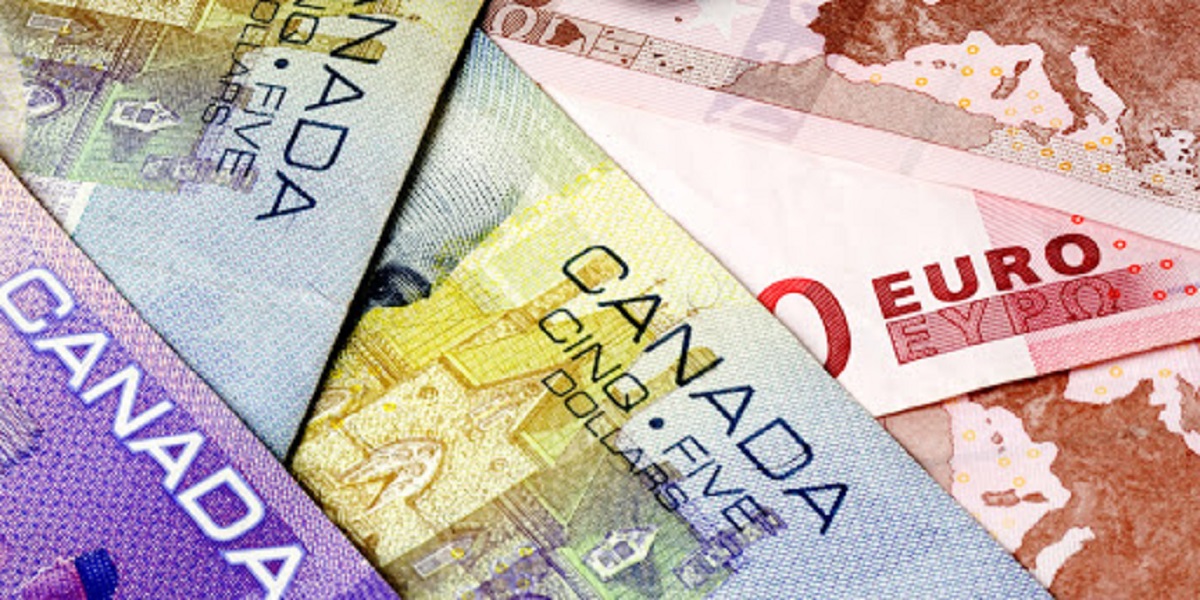
??????????
The foreign exchange market is a complex and dynamic arena where currencies from different countries are traded. Among the myriad of currency pairs, the Euro to Canadian Dollar (EUR/CAD) exchange rate stands as a significant player in the global financial landscape. This article aims to delve into the factors influencing the Euro to Canadian Dollar exchange rate, historical trends, and the current state of affairs.
Historical Context:
To understand the present, it’s crucial to explore the past. The Euro, introduced in 1999, emerged as the official currency of the Eurozone, comprising 19 of the 27 European Union member states. The Canadian Dollar, on the other hand, has a longstanding history as Canada’s official currency. The interaction between these two currencies on the foreign exchange market is a fascinating tale of economic interdependence and global financial dynamics.
Factors Influencing the Exchange Rate:
- Economic Indicators: Economic indicators play a pivotal role in determining exchange rates. Key indicators such as GDP growth, unemployment rates, and inflation directly impact the value of a currency. For the Euro to Canadian Dollar exchange rate, fluctuations in the Eurozone and Canadian economies are closely monitored. A stronger Euro often correlates with a robust Eurozone economy, while a stronger Canadian Dollar mirrors favorable economic conditions in Canada.
- Interest Rates: Central banks play a crucial role in shaping currency values through their monetary policies. Interest rates set by the European Central Bank (ECB) and the Bank of Canada influence investor decisions. Higher interest rates in the Eurozone can attract foreign capital, increasing demand for the Euro and potentially raising its value against the Canadian Dollar.
- Political Stability: Political stability is a key factor in determining investor confidence. Political uncertainty or instability in either the Eurozone or Canada can lead to fluctuations in the exchange rate. Investors tend to seek refuge in stable currencies, impacting the Euro to Canadian Dollar exchange rate during times of political turmoil.
- Trade Balance: The trade balance between the Eurozone and Canada influences the exchange rate. A trade surplus in the Eurozone, indicating that it exports more than it imports, can lead to an increased demand for the Euro. Conversely, a trade deficit might weaken the Euro against the Canadian Dollar.
- Commodity Prices: Given Canada’s significant role as a commodity exporter, especially in oil and natural resources, fluctuations in commodity prices impact the Canadian Dollar. Changes in oil prices, for instance, can influence the CAD, subsequently affecting the EUR/CAD exchange rate.
Current State of Affairs:
As of the latest data, the Euro to Canadian Dollar exchange rate remains subject to various influences. The global economic landscape, shaped by events such as the ongoing COVID-19 pandemic, continues to impact currency values. The Eurozone, navigating through economic recovery, and Canada, adapting to shifts in global demand for its commodities, contribute to the dynamic nature of the EUR/CAD exchange rate.
The Euro has faced challenges, including concerns about economic disparities among Eurozone member countries and uncertainties surrounding the European Union’s future. Conversely, the Canadian Dollar has been influenced by changes in commodity prices, particularly in the energy sector.
Investor sentiment, geopolitical developments, and global economic trends play a significant role in shaping short-term fluctuations in the Euro to Canadian Dollar exchange rate. Traders and financial institutions closely monitor news and events that may impact the currency market, aiming to capitalize on opportunities presented by these fluctuations.
Potential Future Trends:
Predicting future trends in the foreign exchange market is a challenging task, given the multitude of factors at play. However, certain indicators and developments may offer insights into potential shifts in the Euro to Canadian Dollar exchange rate.
- Central Bank Policies: The monetary policies of the ECB and the Bank of Canada will remain central to the currency dynamics. Any changes in interest rates, quantitative easing measures, or forward guidance from these central banks can significantly impact the EUR/CAD exchange rate.
- Global Economic Recovery: As the world continues to recover from the economic fallout of the COVID-19 pandemic, the trajectory of the global economic recovery will influence currency values. Positive economic indicators may strengthen the Euro against the Canadian Dollar, and vice versa.
- Trade Relations: Trade agreements and relations between the Eurozone and Canada will continue to influence the exchange rate. Any developments in trade negotiations, tariffs, or trade imbalances can lead to shifts in investor sentiment, impacting the EUR/CAD exchange rate.
Conclusion:
The Euro to Canadian Dollar exchange rate is a complex interplay of economic, political, and global factors. From historical developments to current trends, and potential future scenarios, understanding the dynamics of this currency pair requires a comprehensive analysis of various elements.
Investors, businesses, and policymakers alike must stay vigilant, keeping abreast of economic indicators, central bank policies, and geopolitical events that may impact the Euro to Canadian Dollar exchange rate. As the global financial landscape evolves, so too will the dynamics of this essential currency pair, shaping the fortunes of those engaged in the foreign exchange market.